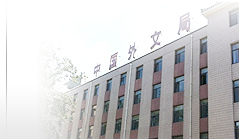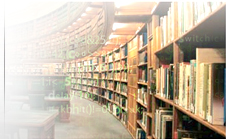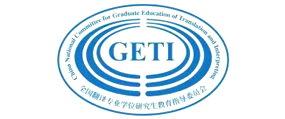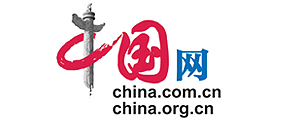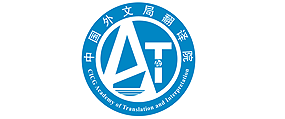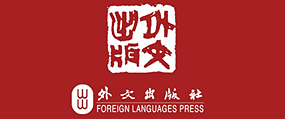目录
理论研究 /
05 新发展阶段:翻译及翻译学科的理念变革 傅勇林 胡云 许怡文
18 翻译研究的语言学途径:从比较语言学到多模态话语分析 潘韩婷
29 翻译社会学的学科间性:主题、范式、话语 徐敏慧
译史纵横 /
39 五四运动前后场域博弈中《共产党宣言》首译本的诞生 谭思蓉 苏艳
译介研究 /
47 新世纪以来中国当代小说在阿语国家的译介研究 高彬
56 “五个在场”模式下彝族史诗翻译研究
——以《勒俄特依》跨国合作英译为例 焦鹏帅
翻译教学 /
64 以作业为核心的笔译教学模式探析 龚锐
73 口译职业伦理教学初探 钱芳 仲伟合
书刊评介 /
80 探索译学方法论研究的新领域与新方法——《译学方法论研究》介评 冯丽霞
学术访谈 /
86 翻译学在西方的诞生及展望——朗贝尔教授访谈录 马会娟 雷炳浩
译家研究 /
93 译苑宏略,朱墨留印:王宏印翻译教学思想的话语阐释 王治国
99 译者的选择与创造
——雷爱玲的中国古典文学西译之路 陈婷婷 谭贞容
学术视点 /
107 新时代服务国家战略需求的中国翻译研究:趋势与重点 张威
115 作为翻译通论新议题的翻译适应:问题的提出 杨仕章
翻译评论 /
123 哲学典籍翻译中“整体性方法”的运用
——以林理璋的《易经》英译为例 谭晓丽
133 从古典发现后现代
——论闵福德《聊斋志异》英译本的旨趣 付强
学术争鸣 /
143 “不可抗力”与force majeure是对等翻译吗
——兼谈法律翻译事实性与有效性的统一 万立
实践探索 /
150 绘画语言在文学翻译中的创用探析 张保红
158 党政文献翻译中名词化翻译转移策略研究 唐革亮 曲英梅
166 剧场手语传译:以百老汇音乐剧《长靴皇后》为例 肖晓燕 罗然薰
自学之友 /
172 The Great Question(Excerpt)(John Lubbock) 曹明伦 译
175 论译者的学者意识 曹明伦
180 北京冬奥会希望之火映红天际(王恒志) 蔡力坚 译
181 翻译中文学修辞手段的处理 蔡力坚
词语选译 /
夹页 《中国的民主》白皮书重要语汇汉英对照
187 英文摘要 /
信息广角 /
190 2022年中国翻译协会培训计划
191 第三十四届韩素音国际翻译大赛竞赛规则
中文摘要
新发展阶段:翻译及翻译学科的理念变革
傅勇林 胡云 许怡文 西南交通大学
傅勇林 胡云 许怡文 西南交通大学
摘要:处于新发展阶段的翻译及翻译学科应该鲜明地体现思想性、时代性、流变性和实践性。其核心要务是积极推动翻译及翻译学科的战略理念变革,一要“胸怀祖国,放眼世界”,二要“古为今用,洋为中用”,这其中网络化思维、数据思维和复杂性思维尤为重要。而战术理念变革主要包括问题意识、文献修养、历史意识、基础研究等四个方面,体现翻译及翻译学科的实践品格及实践力量,是战略理念变革的具体实施和生动呈现。以牢实的学术、知识和思想基础作为建构力量,积极推动翻译及翻译学科的理念变革,能为全面建成社会主义现代化强国、构建“人类命运共同体”做出积极贡献。
关键词:翻译及翻译学科;战略理念变革;战术理念变革
中图分类号:H059 文献标识码:A 文章编号:1000-873X (2022) 01 - 0005 – 13
翻译研究的语言学途径:从比较语言学到多模态话语分析
潘韩婷 北京师范大学珠海校区
潘韩婷 北京师范大学珠海校区
摘要:本文回顾了20世纪中期以来翻译研究的语言学途径的发展历程,重新审视了语言学与翻译研究之间的关系,并预测了二者关系的未来发展趋势。本文将翻译研究的语言学途径发展分为三个主要阶段:早期现代语言学阶段、语篇分析阶段、多模态话语分析阶段。通过回顾和论述这三个阶段的重要文献及其在翻译研究中的应用,探讨了语言学理论与概念在翻译研究领域的介入及其对翻译学科发展的影响。
关键词:翻译;语言学;语篇分析;多模态话语分析
中图分类号:H059 文献标识码:A 文章编号:1000-873X (2022) 01 - 0018 - 11
翻译社会学的学科间性:主题、范式、话语
徐敏慧 澳门大学
徐敏慧 澳门大学
摘要:20世纪末发端发展的翻译社会学借助社会学理论框架研究、解释作为社会实践活动的翻译问题,呈现出明显的交叉学科特征。本文从翻译社会学研究的主题、范式及话语层面论证其学科间性的本质属性,指出其研究主题涵盖从文本到副文本、再到文本外的广阔领域,体现多门不同学科的互动与交叉;其研究范式是学科间的相互借鉴与发展,翻译研究运用社会学的分析工具探讨翻译现象,而社会学可借鉴翻译研究中有关文化、历史、地域的视角和成果,研究与翻译相关的文化、历史、政治、社会的隐含意义等两个学科共同关注的话题。翻译社会学从历史、文化、社会的视角审视翻译研究学科,构建了翻译研究跨学科、多学科的学术话语,成为学科发展新的增长点。
关键词:翻译社会学;学科间性;主题;范式;话语
中图分类号:H059 文献标识码:A 文章编号:1000-873X (2022) 01 - 0029 - 10
五四运动前后场域博弈中《共产党宣言》首译本的诞生
谭思蓉 苏艳 华中师范大学
谭思蓉 苏艳 华中师范大学
摘要:本文借鉴布迪厄的社会实践理论,探究五四运动前后场域博弈中《共产党宣言》陈望道译本的翻译生产过程。北洋政府作为处于支配地位的权力场域,为报刊场域提供了一定的言论和结社自由,使《星期评论》得以创刊并自上而下发起《共产党宣言》翻译项目。高等教育场域中的“一师”是浙江新文化运动中心,陈望道在此积累了充足的象征资本,成为《共产党宣言》的最终译者。场域之间的博弈最终又促成《共产党宣言》的译文从附录转变为单行本出版,成功完成其翻译生产过程,改写了中国历史。
关键词:《共产党宣言》;陈望道译本;权力场域;报刊场域;高等教育场域;翻译生产过程
中图分类号:H059 文献标识码:A 文章编号:1000-873X (2022) 01 - 0039 - 08
新世纪以来中国当代小说在阿语国家的译介研究
高彬 江苏科技大学/同济大学
高彬 江苏科技大学/同济大学
摘要:中国与“一带一路”沿线阿拉伯语国家有着悠久的文化交流历史。新世纪以来,中国当代小说在阿语国家的译介呈现较快的发展势头。本文通过介绍新世纪以来中国当代小说在阿语国家的译介情况,考察它们在该区域民间、官方和汉学家译者三个层面的接受效果,重点分析中国当代小说在阿语国家取得较好接受效果的深层原因,并指出这些因素对于推动中国文学走向其它国家和地区具有重要的启示意义。
关键词:中国当代小说;阿拉伯语国家;译介;接受
中图分类号:H059 文献标识码:A 文章编号:1000-873X (2022) 01 - 0047 - 09
“五个在场”模式下彝族史诗翻译研究
——以《勒俄特依》跨国合作英译为例
焦鹏帅 西南民族大学
——以《勒俄特依》跨国合作英译为例
焦鹏帅 西南民族大学
摘要:本文以马克·本德尔和阿库乌雾合译彝族创世史诗《勒俄特依》(2019)为例,探讨其选译背景、选译标准、译前准备、翻译过程、译后出版以及由此折射出的翻译伦理观。指出选取原汁原味的一手源文献,可尽量避免经过二语转换人为“格式化”的影响;“五个在场”的田野考察译前准备模式可使译者以研究者的身份近距离观察、体验和参与彝族叙事史诗的演述传统、场域和现实活态;译中探讨式跨国合作翻译模式为主译准确理解彝文原文提供了必要的方法保障。中美大学校际合作为我国彝族文学文化“走出去”提供了制度基础;马克·本德尔“以译助研,以研促译”的治学方式以及这部诗集基于“五个在场”的田野考察的译前准备翻译模式与多方合作的译后出版过程,为我国少数民族文学的外译与传播提供了理论、方法和实践上的启示与参考。
关键词:《勒俄特依》;五个在场;探讨式合作翻译;田野考察;翻译伦理
中图分类号:H059 文献标识码:A 文章编号:1000-873X (2022) 01 - 0056 - 08
以作业为核心的笔译教学模式探析
龚锐 上海外国语大学
龚锐 上海外国语大学
摘要:专业笔译的技能主要是一种程序性知识,为促进这种技能的习得,可围绕翻译任务来组织教学活动。本文在梳理关于职业笔译的任务特点、专家技能的组成及建构主义学习理论的基础上,结合教学实践,试图探索建立一个科学的以作业为核心的笔译教学模型。该模型包括作业的布置、批改和课堂讲解等环节,以学生为中心,注重学生的翻译过程和思维机制,旨在通过教师对学生作业情况的不断跟踪诊断与干预,帮助其完成翻译技能知识结构和策略体系的建构和优化,从而促成其获得专家技能,成为符合市场需求的专业翻译人才。
关键词:作业;翻译过程;思维机制;专家技能;笔译教学
中图分类号:H059 文献标识码:A 文章编号:1000-873X (2022) 01 - 0064 - 09
口译职业伦理教学初探
钱芳 广东外语外贸大学 | 仲伟合 澳门城市大学/广东科技学院
钱芳 广东外语外贸大学 | 仲伟合 澳门城市大学/广东科技学院
摘要:本文结合中国翻译协会发布的《译员职业道德准则与行为规范》,以广东外语外贸大学高级翻译学院国际会议传译证书班“会议口译职业与规范”课程为例,从学习目标三阶段、教学内容三支柱、教学过程三环节、教师能力三要素、学生认知三维度等五个方面介绍了口译职业伦理教学模式。文章指出了开展系统化口译职业伦理教育的必要性,认为专业口译人才培养应坚持职业伦理与职业能力并重。
关键词:口译员;职业伦理;教学
中图分类号:H059 文献标识码:A 文章编号:1000-873X (2022) 01 - 0073 - 07
探索译学方法论研究的新领域与新方法
——《译学方法论研究》介评
冯丽霞 广西师范大学
——《译学方法论研究》介评
冯丽霞 广西师范大学
摘要:翻译学术研究规范化是翻译学科逐步发展成熟的标志。年轻的翻译学科需要实践方法论以指导相关实践,也需要认识方法论以提升对译学活动的认知。蓝红军《译学方法论研究》采用发生学研究方法,将中西译学方法论认识置于历时、动态、具体的译学发展时空中,揭示其产生发展的历史前提,探究其演进相殊之哲学根源,描述其当今跨学科途径之成因与原则,预测其未来发展方向及动力之源,既是译学认识方法论的开拓性探索,也是译学研究发生学路径的开创性范例。
关键词:《译学方法论研究》;译学认识方法论;发生学方法
中图分类号:H059 文献标识码:A 文章编号:1000-873X (2022) 01 - 0080 - 06
翻译学在西方的诞生及展望
——朗贝尔教授访谈录
马会娟 北京外国语大学/江西理工大学 | 雷炳浩 北京外国语大学
——朗贝尔教授访谈录
马会娟 北京外国语大学/江西理工大学 | 雷炳浩 北京外国语大学
摘要:比利时鲁汶大学的朗贝尔教授是翻译学学科的创始人之一,他和图里等学者一起推动和见证了翻译学在西方的诞生和发展。在本次访谈中,朗贝尔教授就翻译学在西方创建的历史背景、当代翻译研究中的一些问题、翻译教学和翻译研究的关系等内容畅谈观点,为我国当前的翻译学科建设和发展提供思考。
关键词:翻译研究;历史背景;学科建设
中图分类号:H059 文献标识码:A 文章编号:1000-873X (2022) 01 - 0086 - 07
译苑宏略,朱墨留印:王宏印翻译教学思想的话语阐释
王治国 天津工业大学
王治国 天津工业大学
摘要:王宏印作为翻译理论家和资深翻译家,一生涉猎广泛,翻译教学是其用功颇勤的一个重要领域。他在深耕翻译教材编著、深化文本再造与翻译笔法理念、深挖人才培养通识教育等方面有诸多真知灼见。本文就王宏印的翻译教学思想进行梳理,尝试提炼并阐释其围绕翻译能力培养和翻译笔法形成而展开的翻译教学思想,以期推动翻译教学话语研究和相关讨论。
关键词:王宏印;翻译教学;文本再造;翻译笔法
中图分类号:H059 文献标识码:A 文章编号:1000-873X (2022) 01 - 0093 - 06
译者的选择与创造
——雷爱玲的中国古典文学西译之路
陈婷婷 谭贞容 安徽大学
摘要:译者作为翻译的主体,对文学译介的质量与传播效果有着直接而重要的影响。西班牙著名翻译家、汉学家雷爱玲对中国古典文学在西语世界的译介和传播做出了卓越的贡献。本文对雷爱玲的中国古典文学西译历程进行系统性梳理,探析其翻译观念、翻译策略与翻译路径,分析其翻译与研究之间的相互关联性,并着重关注译者在其翻译观念的引导下,以西方读者愿意主动接受的方式和易于理解的表达,拓展其翻译创造性的实践,以期探索中国文化“走出去”的有效途径。——雷爱玲的中国古典文学西译之路
陈婷婷 谭贞容 安徽大学
关键词:中国古典文学;译介传播;雷爱玲;汉学
中图分类号:H059 文献标识码:A 文章编号:1000-873X (2022) 01 - 0099 - 08
新时代服务国家战略需求的中国翻译研究:趋势与重点
张威 北京外国语大学
张威 北京外国语大学
摘要:服务国家发展战略,凸显社会公共价值,是新时代中国翻译研究的基本定位和原则。为此,中国翻译研究未来重点话题主要包括:中国特色对外话语翻译与传播(特别是传播模式、质量评估)、服务“一带一路”倡议的翻译资源库建设、现代技术与翻译产业的整合与创新、中国特色翻译话语及其理论构建、语料库翻译研究拓展与深化、多媒介多场景翻译新领域等。明确新时代中国翻译研究重点方向与话题,利于加强翻译研究服务国家战略的作用,满足社会需求,构建中国特色的翻译研究学术体系、学科体系和话语体系。
关键词:中国翻译研究;国家战略;趋势;重点
中图分类号:H059 文献标识码:A 文章编号:1000-873X (2022) 01 - 0107 – 08
作为翻译通论新议题的翻译适应:问题的提出
杨仕章 上海外国语大学
杨仕章 上海外国语大学
摘要:翻译共相是指一切翻译类型与形式所共有的现象与范畴,因而被视为翻译通论议题。长期以来,翻译适应多以隐性方式存在于翻译活动当中,未能获得独立的研究地位。从语言学、跨文化传播、翻译价值等视角可以充分论证翻译适应乃是翻译共相的一种类型,完全可以构成翻译通论中一个新的议题。翻译适应由于涵纳了等值与非等值,因而成为后等值时代翻译行为的新追求。
关键词:翻译适应;翻译通论;翻译行为
中图分类号:H059 文献标识码:A 文章编号:1000-873X (2022) 01 - 0115 - 08
哲学典籍翻译中“整体性方法”的运用
——以林理璋的《易经》英译为例
谭晓丽 衡阳师范学院 / 武汉工程大学
——以林理璋的《易经》英译为例
谭晓丽 衡阳师范学院 / 武汉工程大学
摘要:加拿大汉学家林理璋的《易经》英译是第一个以王弼《周易注》为原本且哲学性最强的译本,获得了西方学界的高度评价。译者具有清晰的翻译理念,擅长运用“整体性方法”,其《易经》英译本中导言的写作、体例的编排、对历代注家的援引、术语的翻译以及对注释话语的翻译,都旨在引导读者从整体上理解原著蕴含的哲学义理,从细节上再现原著的文体风格,这对中国思想典籍的英译具有启示和借鉴作用。
关键词:林理璋;《易经》;英译;《周易注》;整体性方法
中图分类号:H059 文献标识码:A 文章编号:1000-873X (2022) 01 - 0123 - 10
从古典发现后现代
——论闵福德《聊斋志异》英译本的旨趣
付强 四川外国语大学
——论闵福德《聊斋志异》英译本的旨趣
付强 四川外国语大学
摘要:闵福德以后现代的眼光重新审视《聊斋志异》的古典世界,试图以多元、开放的翻译文本拆除东西方文化的二元对立。闵译本着意彰显互文性和游戏性,散发着强烈的后现代主义气息。但闵译本以“戏”为中心解读原著也导致原作者的孤愤情绪并未在译作中得到充分呈现。
关键词:《聊斋志异》;闵福德译本;后现代主义
中图分类号:H059 文献标识码:A 文章编号:1000-873X (2022) 01 - 0133 - 10
“不可抗力”与force majeure是对等翻译吗
——兼谈法律翻译事实性与有效性的统一
万立 华东政法大学
——兼谈法律翻译事实性与有效性的统一
万立 华东政法大学
摘要:法律翻译日益成为涉外法律事务不可或缺的一环,关涉当事人权利、义务的实现,以及裁判结果的执行等诸多问题。多数法域往往自成体系,本身须借以推理与解释等规范工具理解、适用,这对不同法律世界规范的沟通似造成难以逾越的障碍。对“不可抗力”与forcemajeure貌似等值关系的实例考察可以发现,法律术语的翻译往往只注重事实上的对等,未披露甚至偏离了规范上的含义。法律翻译实践中,译者须具备筛选、辨别法律源语规范含义的能力,构建受听众反复检验的法律语场,以实现不同法律世界的通约,推动中国法与外国法的有效互动。
关键词:法律翻译;事实性;有效性;forcemajeure;不可抗力
中图分类号:H059 文献标识码:A 文章编号:1000-873X (2022) 01 - 0143 - 07
绘画语言在文学翻译中的创用探析
张保红 广东外语外贸大学
张保红 广东外语外贸大学
摘要:在表情达意上,语言艺术使用的单位是字、词、句等,绘画艺术使用的单位是线、面、色等。文学创作中,语言艺术与绘画艺术在表现技法上互相借鉴与融合以创新文学表现形式,实现最大量的表现力,进而推动着文学艺术向前发展,这种现象较为常见。但在翻译研究中,这一现象引起的关注并不多。本文基于绘画色彩的特性及审美价值,探讨了文学翻译中色彩表征距离、情感与情景的认知过程及其艺术价值,旨在启迪译者表情达意的艺术思路,创新文学翻译实践方法,拓展文学翻译研究视域。
关键词:文学翻译;绘画语言;色彩
中图分类号:H059 文献标识码:A 文章编号:1000-873X (2022) 01 - 0150 – 08
党政文献翻译中名词化翻译转移策略研究
唐革亮 曲英梅 东北师范大学
唐革亮 曲英梅 东北师范大学
摘要:党政文献及其英译文中名词化表达丰富多样,作为语法隐喻资源的名词化具有重新识解经验的概念功能,因此翻译过程中名词化的变换与取舍改变了源语语篇的意义建构方式。本文基于功能语言学语法隐喻理论,构建名词化翻译转移的基本模式,并探讨其在党政文献翻译中的策略应用,研究发现对翻译教学与实践以及对外政治话语体系研究具有启示作用。
关键词:党政文献;名词化;语法隐喻;翻译转移
中图分类号:H059 文献标识码:A 文章编号:1000-873X (2022) 01 - 0158 - 08
剧场手语传译:以百老汇音乐剧《长靴皇后》为例
肖晓燕 罗然薰 厦门大学
肖晓燕 罗然薰 厦门大学
摘要:本文梳理了舞台导向的戏剧翻译研究及戏剧手语传译研究,利用百老汇音乐剧《长靴皇后》在中国三大城市巡演时首次配备手语传译的案例为契机,借用Rocks(2011)的剧场手语传译模型为分析框架,阐述了音乐剧手语传译的特点。笔者通过对手语传译团队进行深入访谈,对观看手语传译专场的聋人观众进行问卷调查,揭示了本次案例中手语传译的独特挑战以及翻译团队采取的应对策略,希望能为剧场传译的实践和研究提供借鉴。
关键词:剧场手语传译;音乐剧;挑战与策略
中图分类号:H059 文献标识码:A 文章编号:1000-873X (2022) 01 - 0166 - 06
英文摘要
(刘亚猛修订)
(刘亚猛修订)
Conceptual Transformations for a New Era in China’s Development of Translation Practices and Translation Studies
By FU Yonglin, HU Yun & XU Yiwen (Southwest Jiaotong University, Chengdu,China) p. 5
By FU Yonglin, HU Yun & XU Yiwen (Southwest Jiaotong University, Chengdu,China) p. 5
Abstract: As China enters a new era of socio-cultural development, its practices and studies of translation should also strive simultaneously to be ideologically committed, up-to-date, fluid and practical. Primary among these targeted features is a commitment to promoting ideational transforms of translation practices and studies at both the strategic and the tactical level. Strategically, translation practices and studies should endeavor to promote the right ideology at home and abroad. At the tactical level, they should heighten their senses of the problems faced, the subject-relevant literature involved, the historical background related, and the basic researches called for. Achieving these aims would be conducive to the development of China’s translation practices and studies in the new era, so that they could better serve the cause to fully modernize the country and the ideal to build up a human community with a shared future.
Keywords: translation practice; translation studies; ideational transform; strategic and tactical transforms
Three Phases in the Development of Linguistic Approaches to Translation Studies
By PAN Hanting (Beijing Normal University at Zhuhai, Zhuhai, China) p. 18
By PAN Hanting (Beijing Normal University at Zhuhai, Zhuhai, China) p. 18
Abstracts: This paper revisits the development of linguistic approaches to translation studies since the mid-twentieth century and reexamines in particular the relationship between linguistics and translation. It focuses on three major stages in the evolution of these approaches, namely, the stage of early modern linguistics, of discourse analysis, and of multimodality. Following a review of these stages, the paper offers an extensive discussion on how linguistic theories have been intervening in and impacting on the growth of translation studies, offering some suggestions as to how the relationship might continue to develop in the future.
Keywords: translation studies; linguistics; discourse analysis; multimodality
The Interdisciplinarity of the Sociological Studies of Translation: Subject, Paradigm, and Discourse
By XU Minhui (University of Macau, Macau, China) p. 29
By XU Minhui (University of Macau, Macau, China) p. 29
Abstract: The sociology of translation, developed at the end of twentieth century, employs a sociological framework in its analysis and explanation of translation as a social practice. This paper argues for the interdisciplinary nature of such an approach in terms of its subject areas, the paradigm it adopts, and the discourse it generates. An analytical description of the subject areas shows that the sociological approach covers the entire domain of translation, from the textual, the paratextual to the extratextual, and it also takes into account the interactions among the multiple disciplines involved. The sociological paradigm, moreover, entails an interplay between translation studies and sociology, with the former borrowing analytical tools from the latter while the latter using for reference the vision and achievements of the former. Together, they probe issues of their shared concerns in relation to culture, history, politics, and society. The sociology of translation thus opens up new spaces for the subject and paradigm of translation studies, paving the way for a new academic and social discourse and pointing to a new direction of interdisciplinary and multidisciplinary development in/between humanities and social sciences.
Keywords: sociology of translation; interdisciplinarity; subject; paradigm;discourse
Translation and Reception of Contemporary Chinese Novels in Arabic-speaking Countries Since 2000
By GAO Bin (Jiangsu University of Science and Technology, Zhenjiang / TongjiUniversity, Shanghai, China) p. 47
By GAO Bin (Jiangsu University of Science and Technology, Zhenjiang / TongjiUniversity, Shanghai, China) p. 47
Abstract: China and Arab countries have a long history of cultural exchanges, and since the advent of the 21st century, the translation of contemporary Chinese novels in particular has been gaining momentum in Arabic-speaking countries. This paper calls attention to the trend, discussing the reception of contemporary Chinese novels by the ordinary readers, the governments and the sinologist translators in those countries, and exploring the reasons for which contemporary Chinese novels are comparatively well-received in the arabophone world. Inconclusion, the paper points out that the insights gained from the case discussed can well be applied to promoting the “going out” of Chinese literature to other parts of the world.
Keywords: contemporary Chinese novels; Arabic-speaking countries; translation; reception
Translating Nuosu People’s Creation Epic: A Conferential Co-translation Based on “Five Presences” of Field Survey
By JIAO Pengshuai (Southwest Minzu University, Chengdu, China) p. 56
By JIAO Pengshuai (Southwest Minzu University, Chengdu, China) p. 56
Abstract: This paper subjects to a close examination The Nuosu Book of Origins: A Creation Epic from Southwest China (2019), co-translated by Mark Bender and Aku Wuwu, by exploring the background of this translation project, its criteria for selecting the source text, the preparations undertaken before translating, the translating process itself, as well as its publication and the translation ethics reflected therein. The study shows that a translation based directly on the original language source text, such as this one, can avoid as much as possible the “formatting” influence from indirect translation. The co-translators’ adoption of the “five-presence” mode of fieldwork in preparation for their act of translating had turned them both into “researchers in close proximity” enabling them to observe, experience and participate in the tradition, field and reality of Nuosu narrative epics. And the conferential co-translation mode, implemented throughout the translating process, had provided a necessary methodological guarantee for an accurate understanding of the original Nuosu text. In addition, an inter-university cooperation carried out between the two co-translators’ respective institutional affiliations also went a long way toward enabling the literature and culture of Nuosu, an ethnic minority in China, to go abroad and become a subject of international studies.
Keywords: five-presence; a conferential co-translation; fieldwork; translation ethics
Toward a Task-based Model for Translation Teaching
By GONG Rui (Shanghai International Studies University, Shanghai, China) p. 64
By GONG Rui (Shanghai International Studies University, Shanghai, China) p. 64
Abstract: Translation competence is mainly a procedural knowledge. To facilitate the acquisition of such a knowledge, a task-based approach to organizing teaching activities is called for. Based on a review of competence-related researches and constructivist learning models, and drawing also on the author’s own teaching experiences, this paper proposes a model of task-based translation teaching and elaborates on its components such as task selection, performance assessment and classroom teaching. Focusing on students’ translation process and thinking mode, the model renders it possible for translation teachers to continuously monitor and intervene in their students’ undertaking of assigned translation tasks. With the help of the model, the students could quickly come to grips with the way a translation expert constructs and optimizes his/her knowledge base or strategy system, and would thus be in a better position to meet the translation market’s demands once they complete their program of study.
Keywords: translation task; translation process; thinking mechanism; expertise; translation teaching
Choice and Innovation: Alicia Relinque Eleta’s Spanish Translation of Classical Chinese Literature
By CHEN Tingting &TAN Zhenrong (AnhuiUniversity, Hefei, China) p. 99
Abstract: Few translators have left a more visible imprint on Chinese literature’s translation and dissemination in Spanish-speaking countries than Spanish sinologist Alicia Relinque Eleta. This paper offers a systematic review of Eleta’s translation and research of Chinese classics, examining her conception, strategy and method, and analyzing the interrelationship between her translation and research as well. As the review shows, it is Eleta’s creative approach to translation that facilitates her works’ understanding and acceptance by Western readers. In her case, we find an illuminating exemplar for other translators who are engaged in efforts to promote overseas dissemination of Chinese literature and culture.By CHEN Tingting &TAN Zhenrong (AnhuiUniversity, Hefei, China) p. 99
Keywords: classical Chinese literature; Alicia Relinque Eleta; Sinology; Chinese-Spanish translation
The Language of Painting in Literary Translation: With a Special Reference to the Rendition of Color Terms
By ZHANG Baohong (Guangdong University of Foreign Studies, Guangzhou, China) p. 150
By ZHANG Baohong (Guangdong University of Foreign Studies, Guangzhou, China) p. 150
Abstract: Just as language communicates meaning and feeling through words, phrases and sentences, paintings create their artistic effects by way of lines, planes and colors. In works of literature, the use of language is often blended with painting skills and methods for the creation of innovative literary expressive forms that maximize the power of expression and promote the fusion and development of literature and arts. Little research has been done, however, on how translation deals with this kind of hybrid forms. With a reference to color-generated features and aesthetic values in the art of painting, this paper looks into the cognitive process whereby literary translators employ terms of colors to represent distance, feeling and scene for the production of various artistic effects. Its findings open up a fresh way of thinking for the translators, introduce a new approach to literary translation, and broaden the horizon of literary translation studies in general.
Keywords: literary translation; language of painting; color
Translation-related Shift of Nominalizations in C-E Translation of Official Documents
By TANG Geliang & QU Yingmei (Northeast Normal University, Changchun, China) p. 158
By TANG Geliang & QU Yingmei (Northeast Normal University, Changchun, China) p. 158
Abstract: Nominalizations have been abundantly used in Chinese political documents and their English translations. As an important source of grammatical metaphor, nominalizations can lead to a re-construal of experience, and their altering, adding or omitting in translation can result in a semiotic reconstruction of the source text. Within the framework of the grammatical metaphor theory in the Systemic Functional Linguistics, this paper proposes a basic model for effecting the translation-related shift of nominalizations and discusses how the strategy proposed could be applied in the translation of Chinese political documents. What this project reveals bears implications for translation teaching and practice, and it also sheds some useful light on research about internationally-oriented political communications.
Keywords: Chinese political discourse; nominalizations; grammatical metaphor; translation shift

